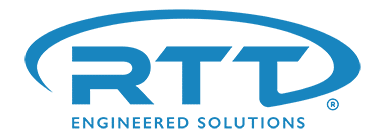Technical Support FAQ
Check out our extensive frequently asked technical questions. Our expert technical team has provided some of the most asked questions. RTT hopes that this section will serve to be a resource to quickly help get your equipment back into production. If you do not find your answer here, please check out our Video Support Library or use the Contact Us page to contact us. You can also call us at our Technical Support number at 122-999-0177 to speak with a technician.
How do I adjust the pulse down timing for my cartridge filter on my powder booth collector?
A2. Turn on the power to the control panel and start the fan.
A3. Locate the Dwyer timer board and press the “Select” button, “Last Output” LED will illuminate, and the display will show a value.
A4. Press the “Select” button, “Time Off” LED will illuminate, and the display will show a value. Use the Up/Down buttons to change the value to the desired amount of time between pulses (in seconds). Quicker pulsing will allow filters to clean faster but will require more compressed air.
A5. Press the “Select” button, “Time On” LED will illuminate and the display will show a value. Use the Up/Down buttons to change the value to the desired amount of time each pulse valve will stay on (default is 100 milliseconds).
A6. Press the “Select” button several times until the “Process” LED illuminates. The programming is now complete. Stop the fan, turn off the power to the control panel. Close the door and wait 2 minutes for the VFD to de-energize, then turn the power back on.
Is my incoming gas pressure to the valve train and burner important?
Pressures at the inlet of the valve that exceed this rating can cause damage to the regulator and internal components of the valve train. In some cases, resulting in the valve train failing to block the flow of gas even when the system is shutdown, resulting in an extremely dangerous situation of explosion and fire. The minimum gas pressure for the system is particularly important as well to ensure that there is enough gas pressure through the valve train and into the burner. Lack of gas pressure will cause issues with the BTU output of the burner and in extreme cases will cause the safety switches on the valve train that monitor low gas pressure to fault.
Typical oven pressure ranges are 2 to 5 PSI and typical Air Make-up Unit gas ranges are from 1.5 to 2.5 PSI but can change based on project designs and field requirements, check the drawings and manuals for exact ranges.
My spray booth doors are being blown open, why is that happening?
Quick items to check:
Are any of the belts broken on any of the fans?
Are all the fans rotating the correct direction?
What is the booth pressure set point on the Carel controller?
Is the pressure sensing tube properly connected to the transmitter?
Is the damper (ARV) at the end of the exhaust stack opening?
Are the exhaust filters new?
Do the specifications of the exhaust filters match what has been supplied by RTT?
Are there turns/offsets in the exhaust ductwork?
What is the amperage rating of the exhaust fan and how many amps is it pulling at 60hz?
How do I adjust the airflow on my powder collector for both more and less airflow?
When should I change my filters on my spray booth?
Intake Filters:
When an increase in debris or dust is noticed in the booth or in the coatings.
If you have a manometer or Magnehelic gauge to measure pressure, drop through the filter, change at the suggested loading of the manufacturer.
Filters have been installed for six months.
Exhaust Filters:
When overspray is noticed to be lingering in the booth more than usual.
The spray booth fan is operating at 100% capacity.
If you have a manometer or Magnehelic gauge to measure pressure, drop through the filter, change at the suggested loading of the manufacturer.
Applying a coating that is capable of spontaneous combustion or other harmful compounds.
Filters have been installed for one month.
It is best practice to establish a filter maintenance program with the help of RTT Engineered Solutions. Improper filter maintenance can affect more than just the finished coating. It can also affect the health and safety of your employees as well as the profitability of your business.
Where is the best location to locate the temperature sensor on my spray booth?
Where do I locate my temperature sensor for my oven to get the best reading to ensure a proper cure of my products?
My spray booth and oven controls ask for a password to change my control settings, what are they?
CT/CTC AMU – All passcodes provided in the RTT Booth & AMU Detailed Start-up Guide).
Operator passcode is 2050
Oven – All passcodes in the Oven Operation & Maintenance manual. Maintenance passcode is 1111
